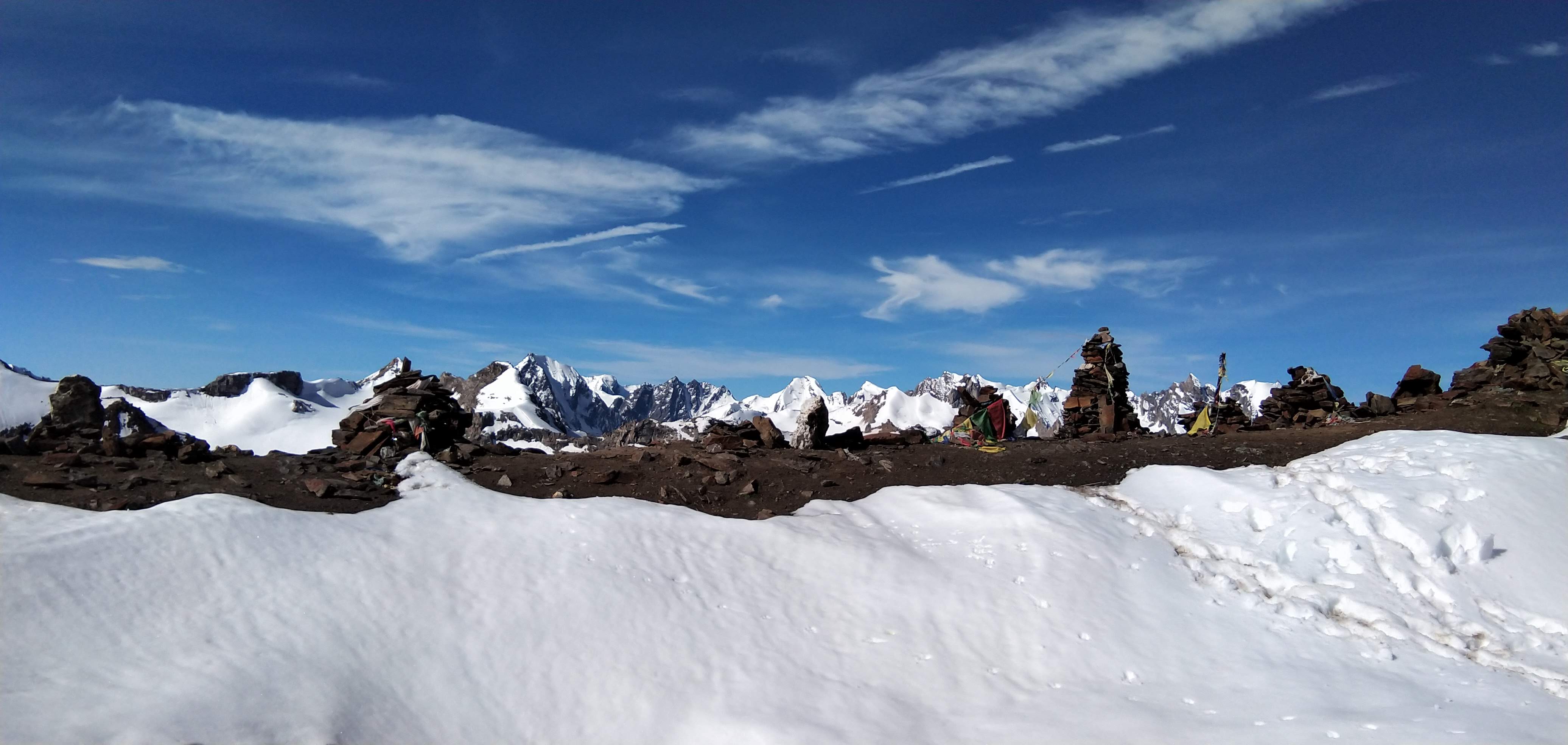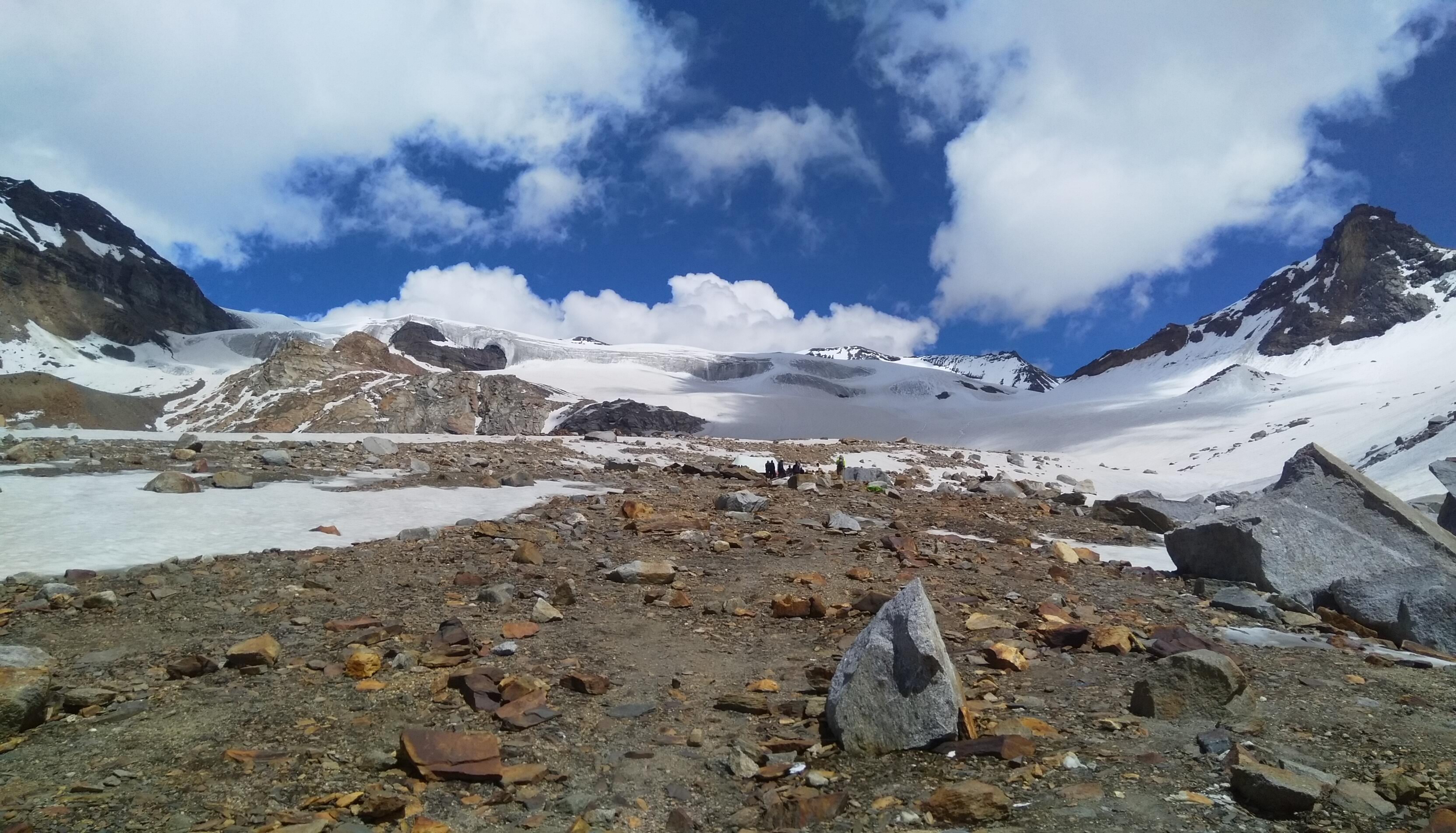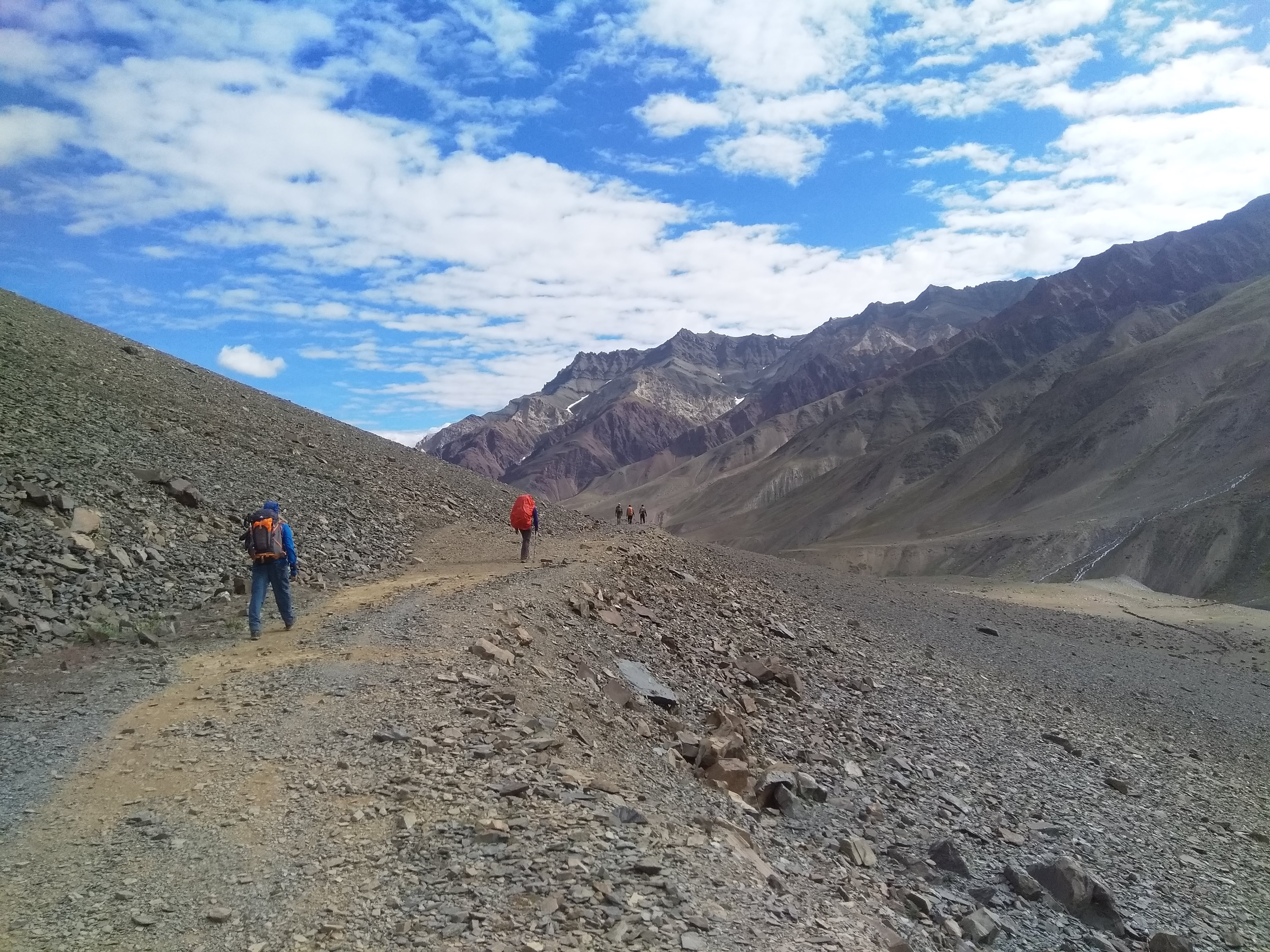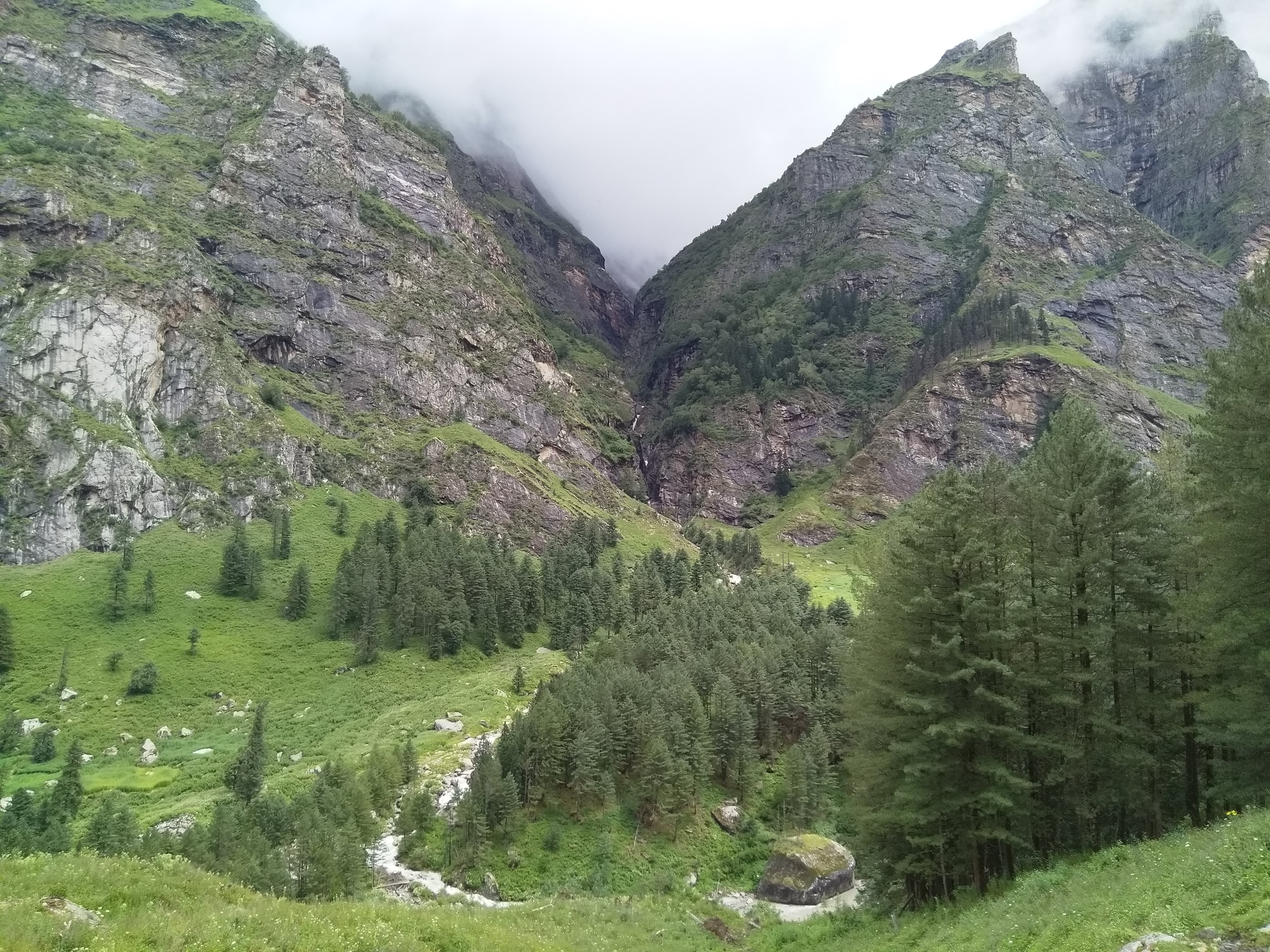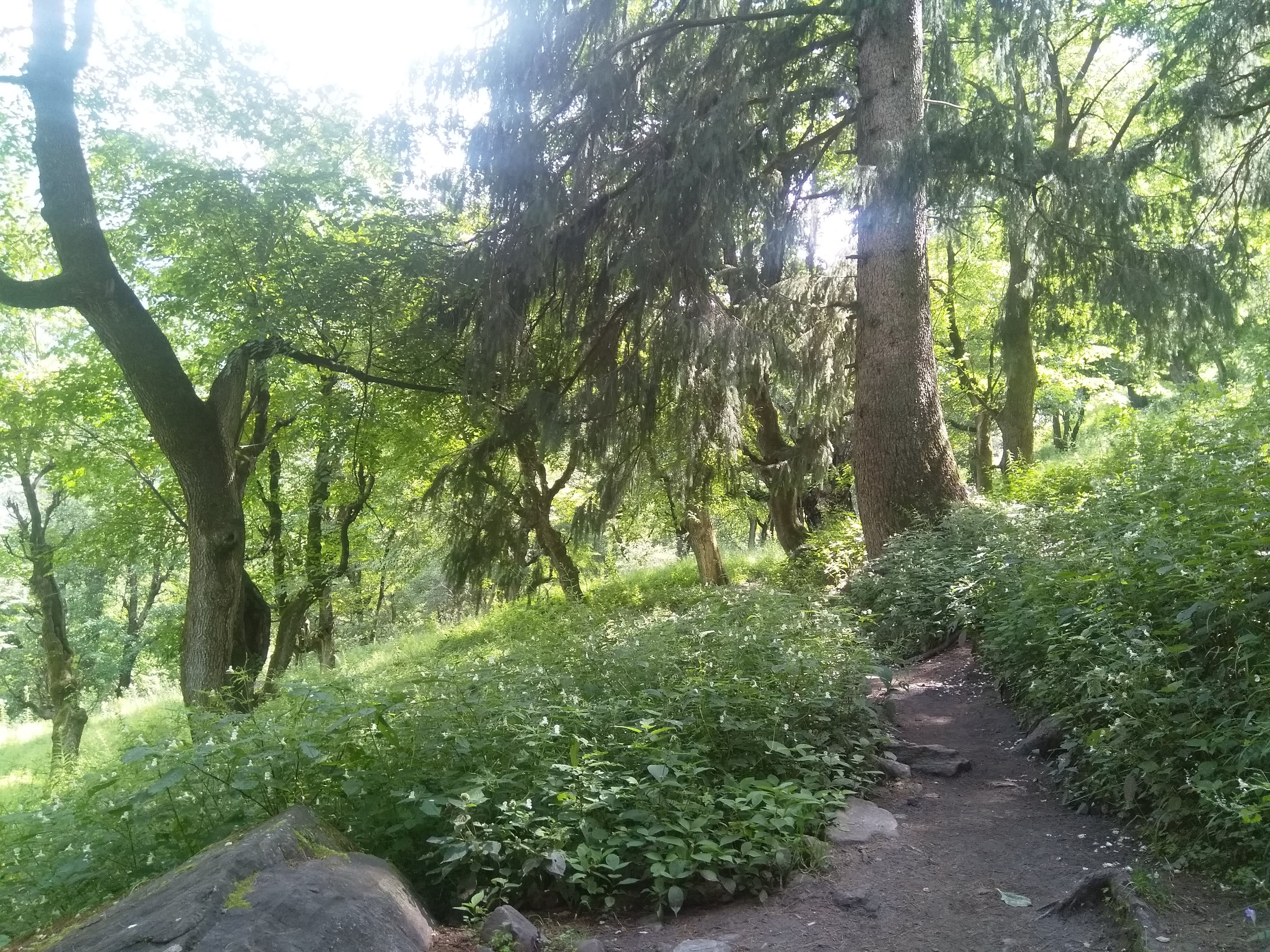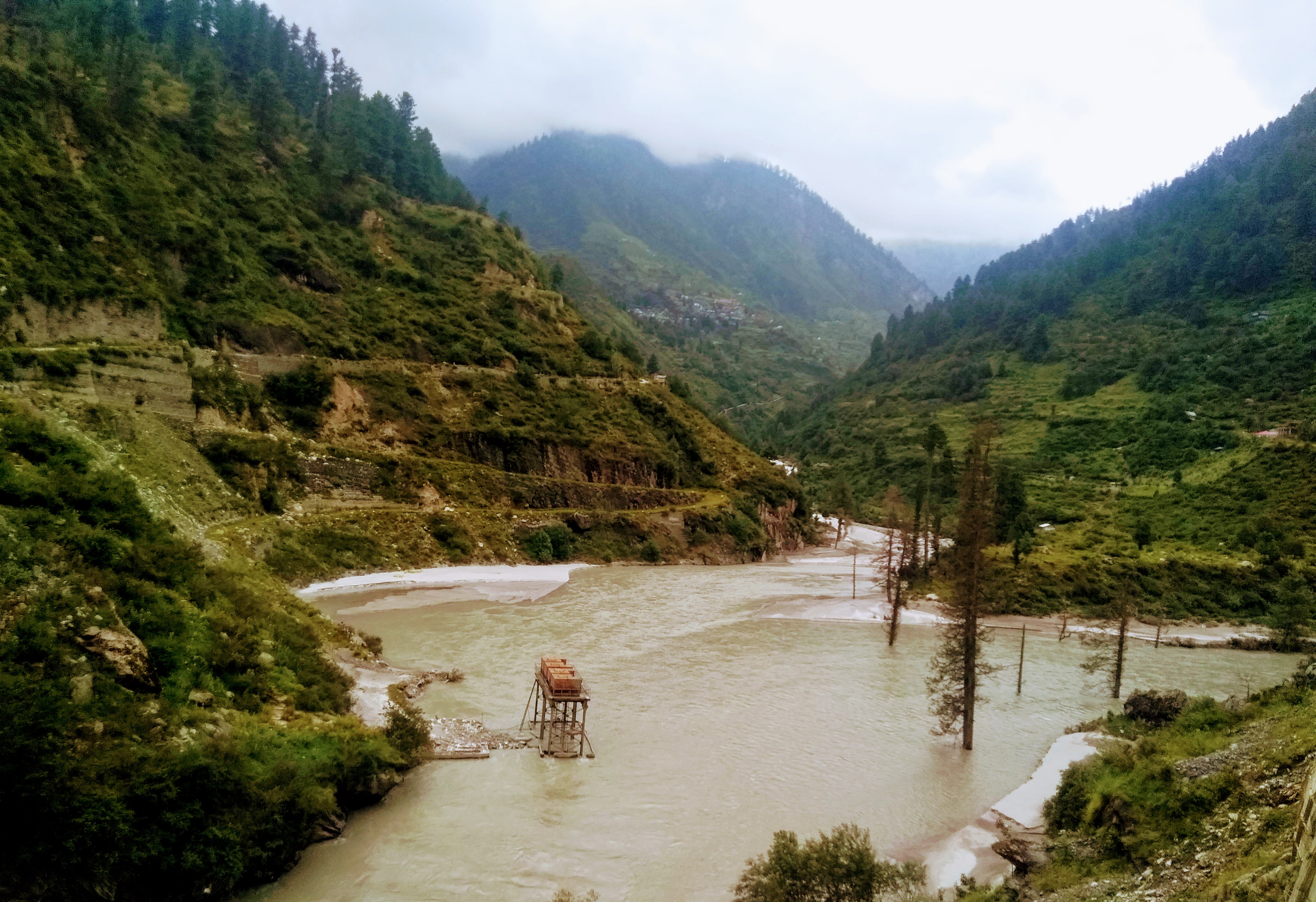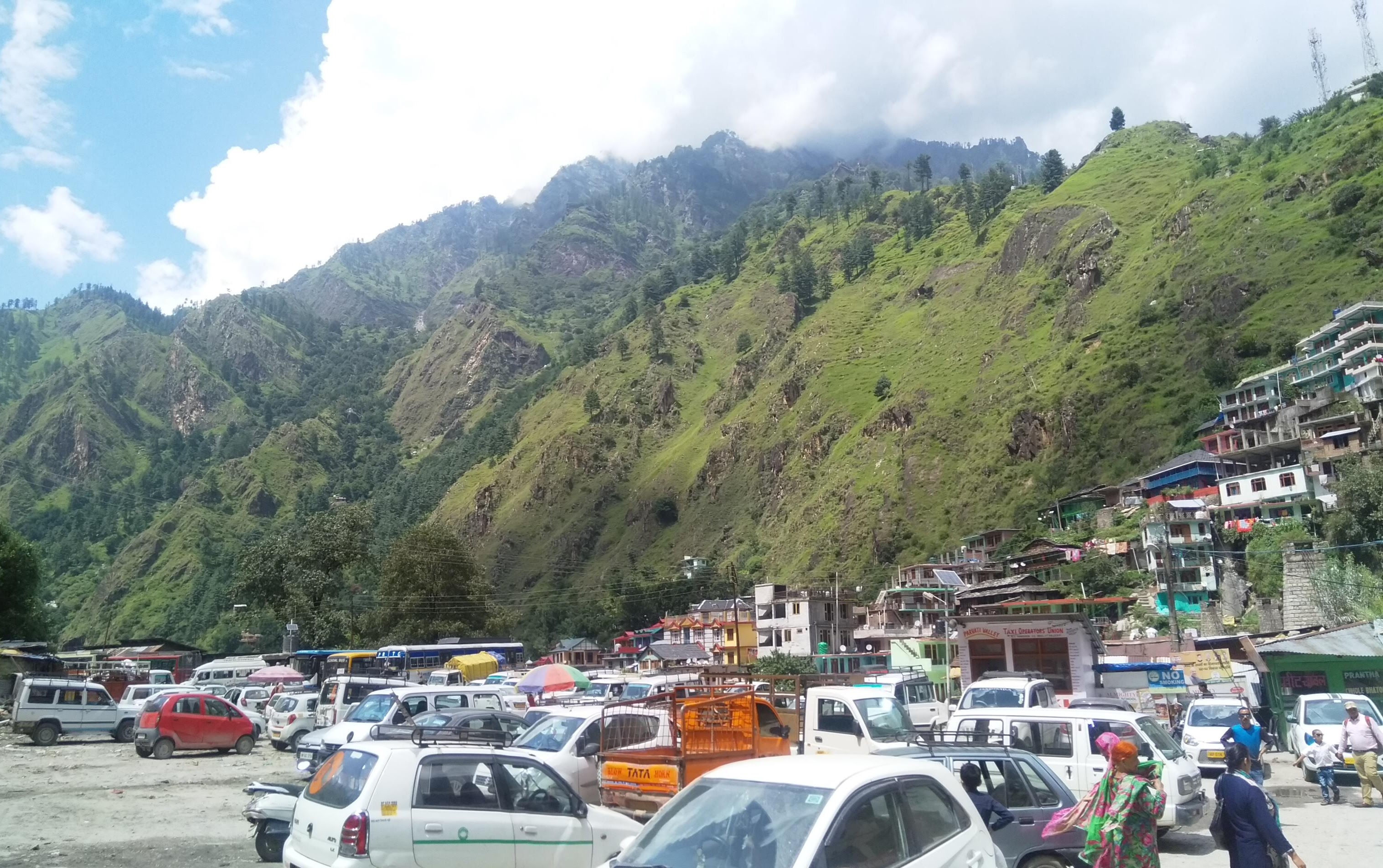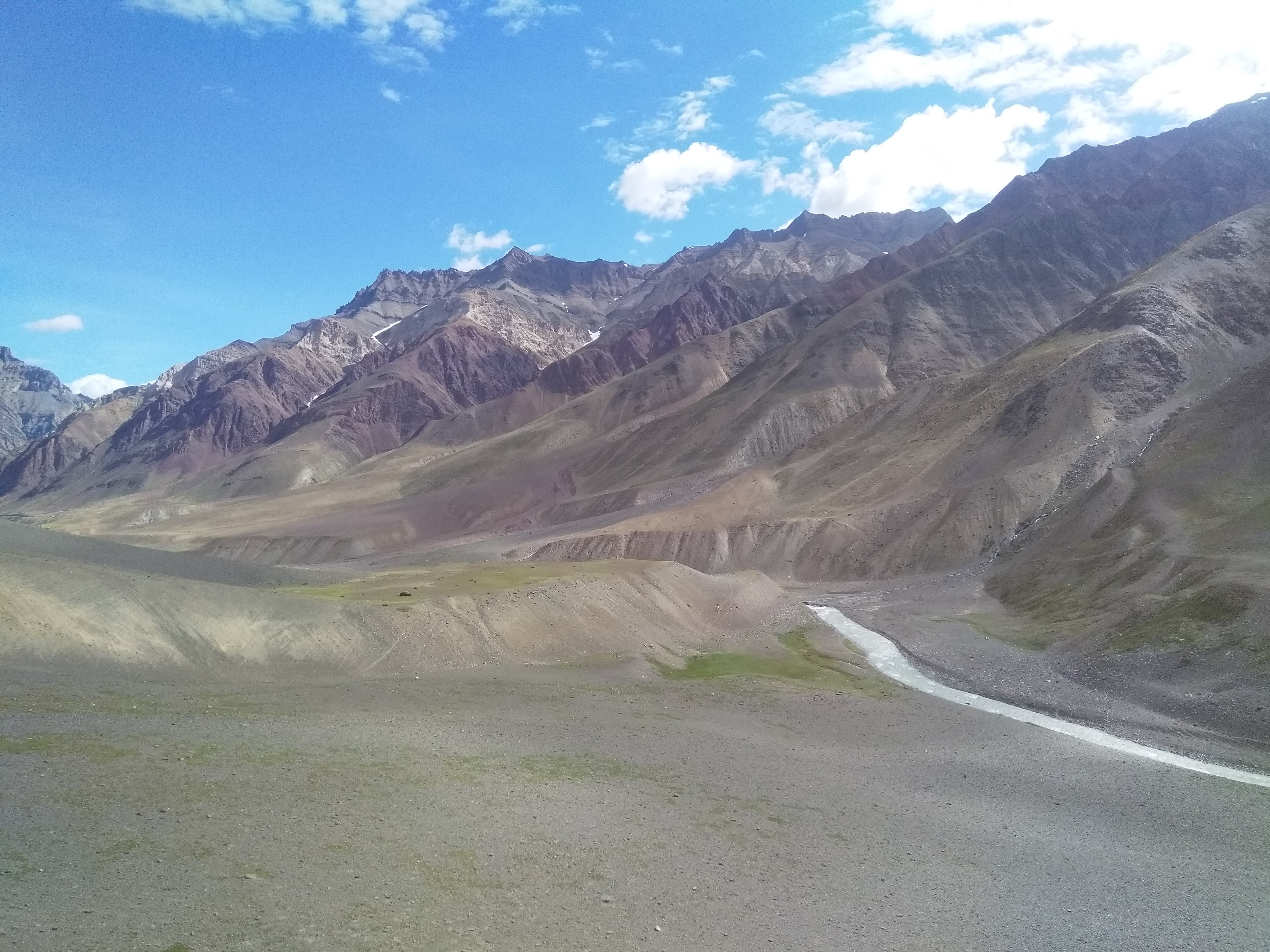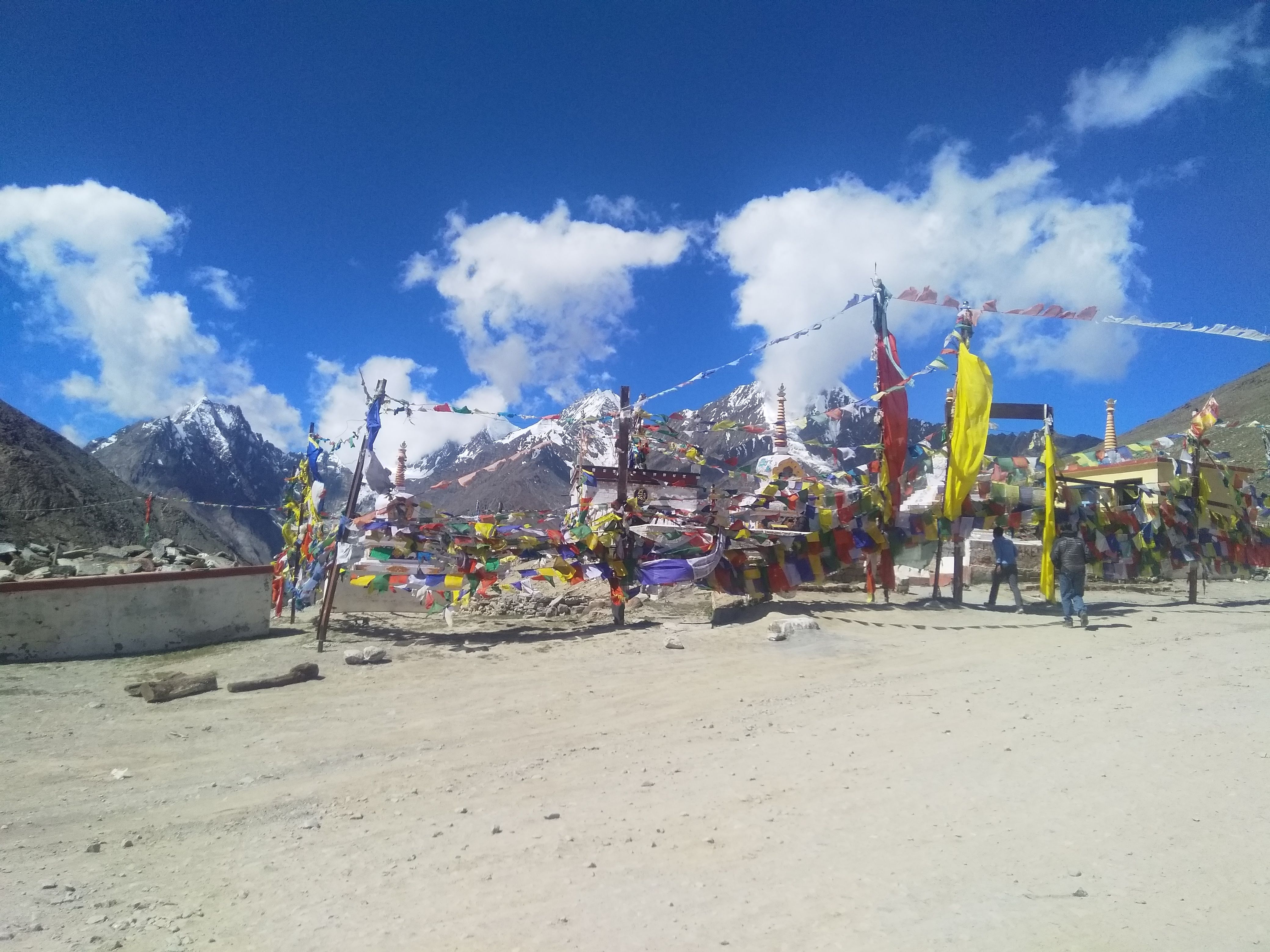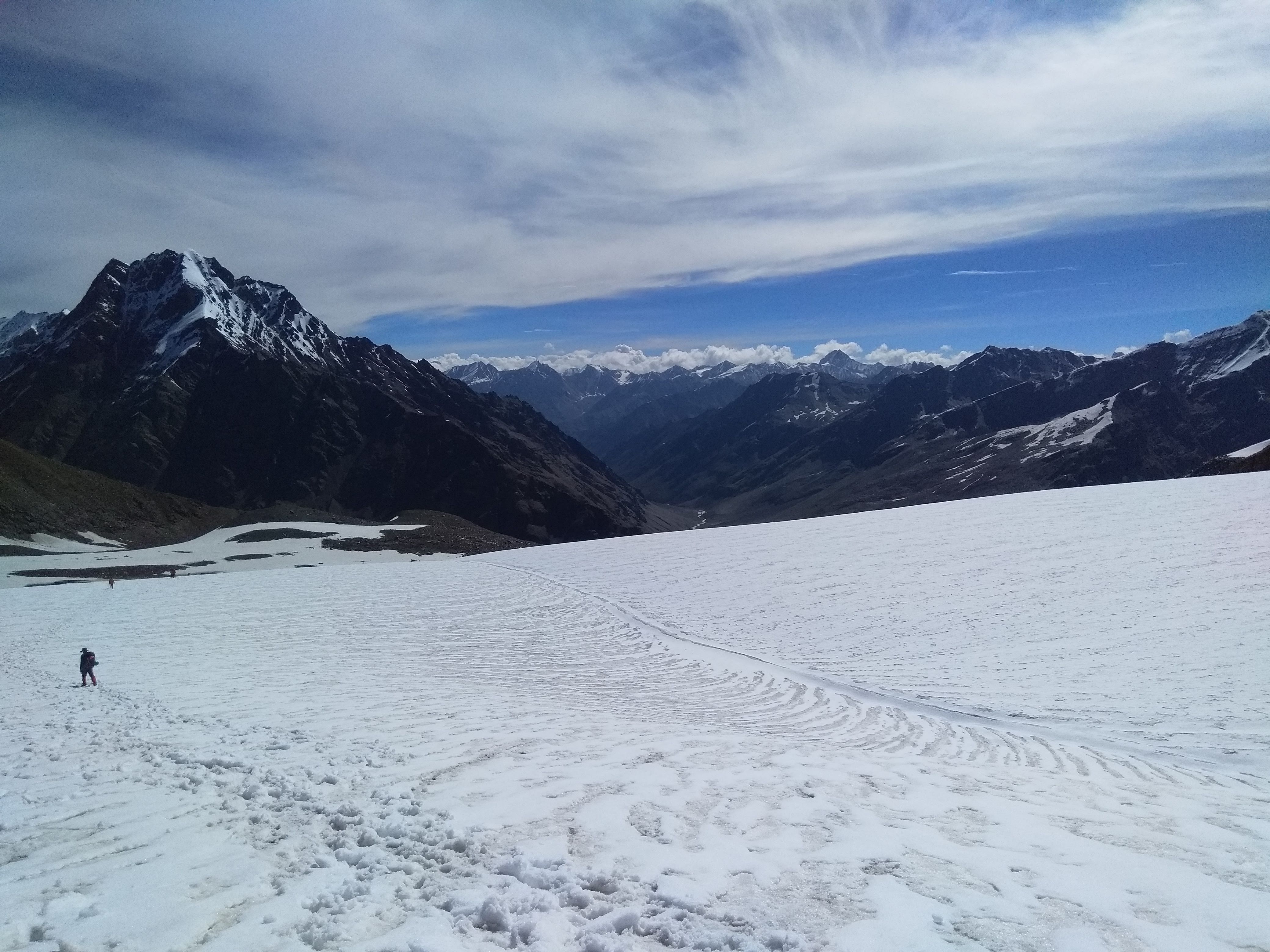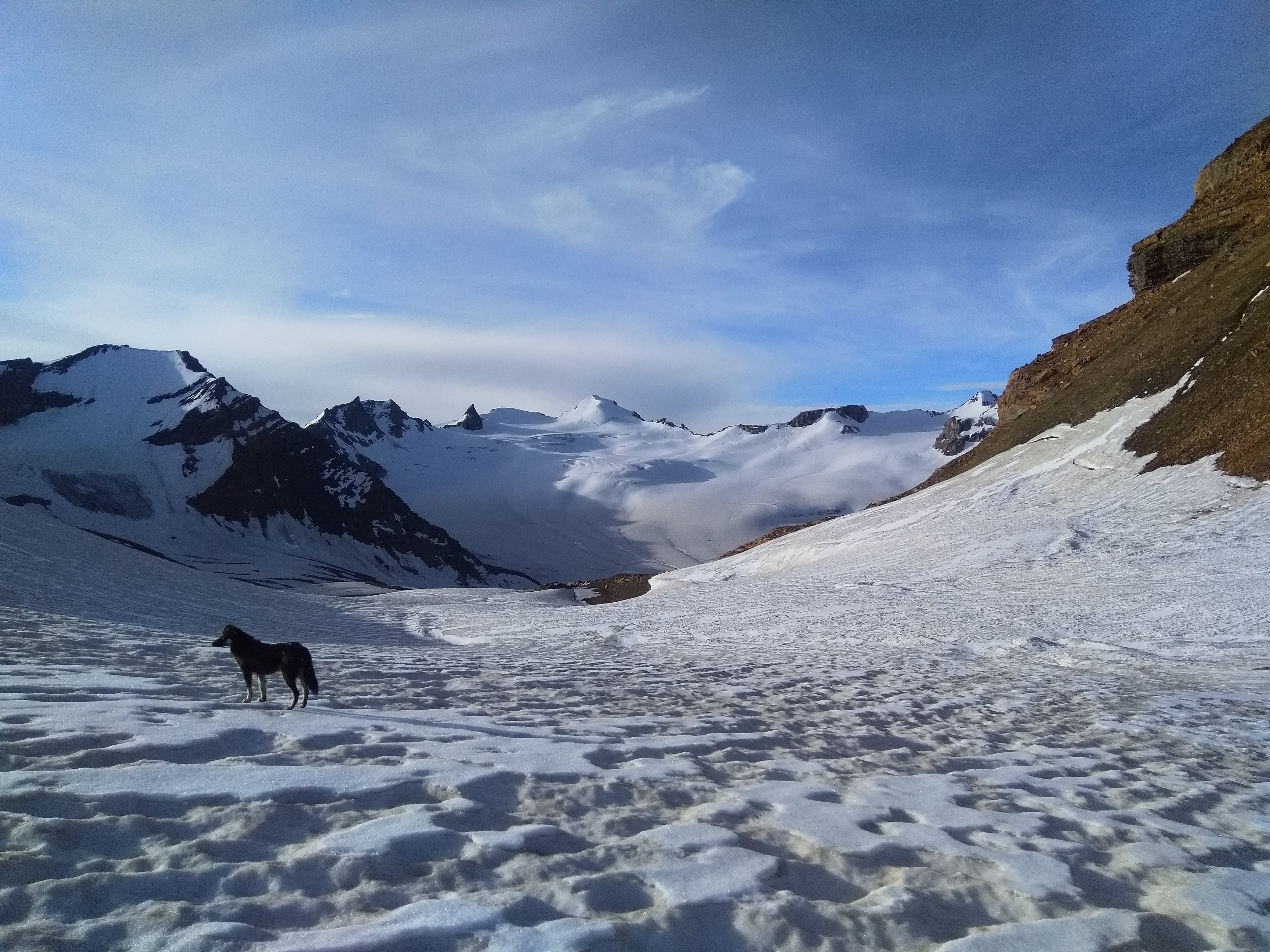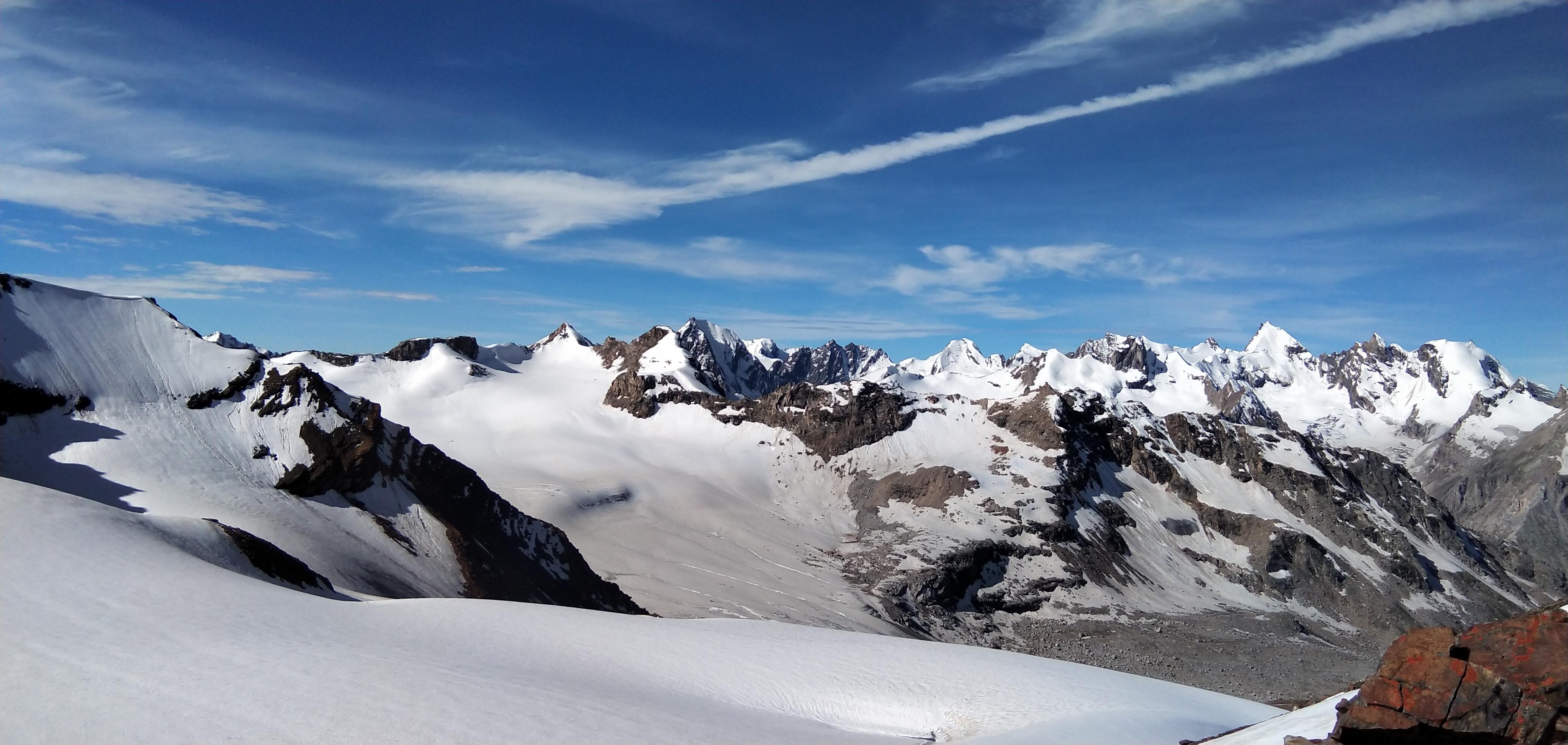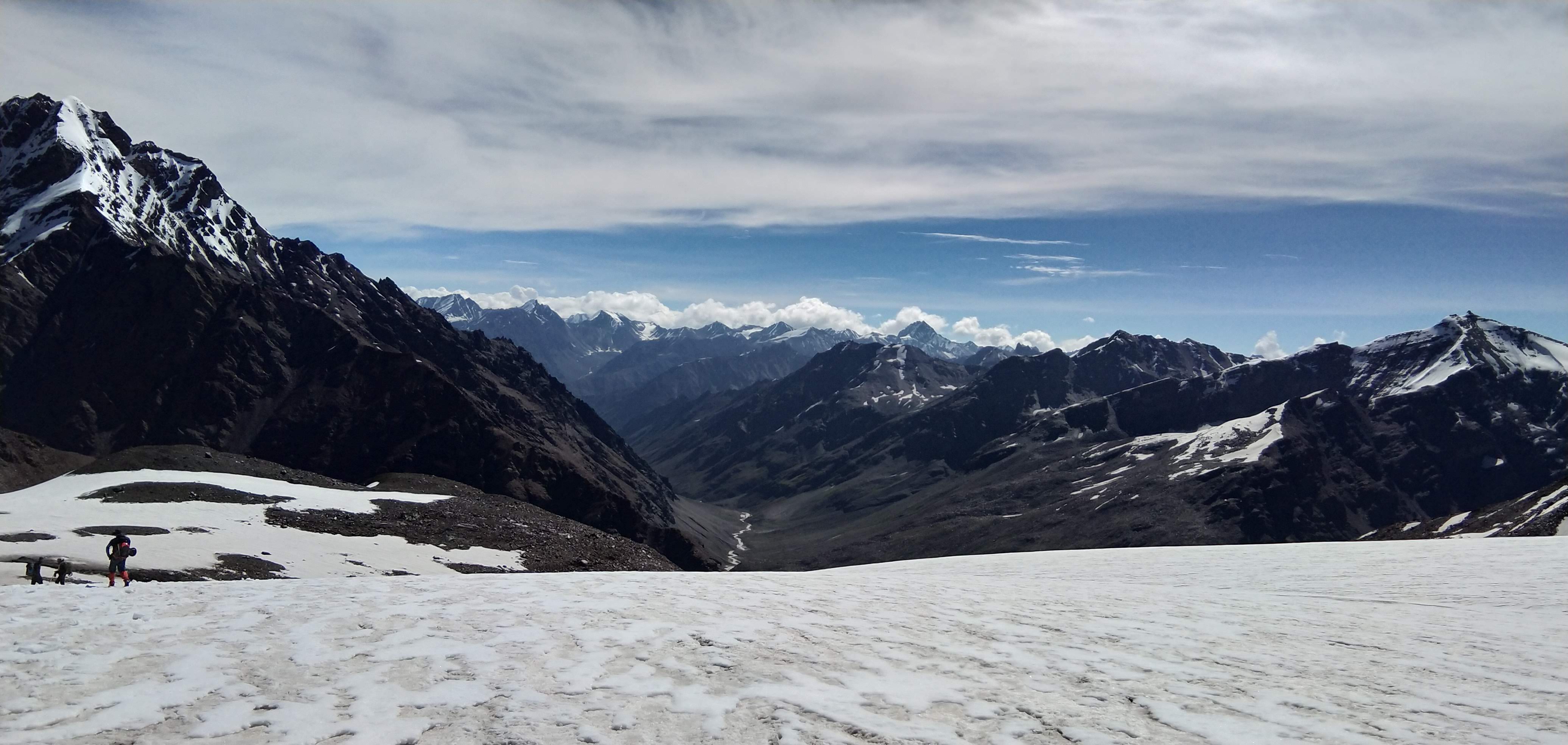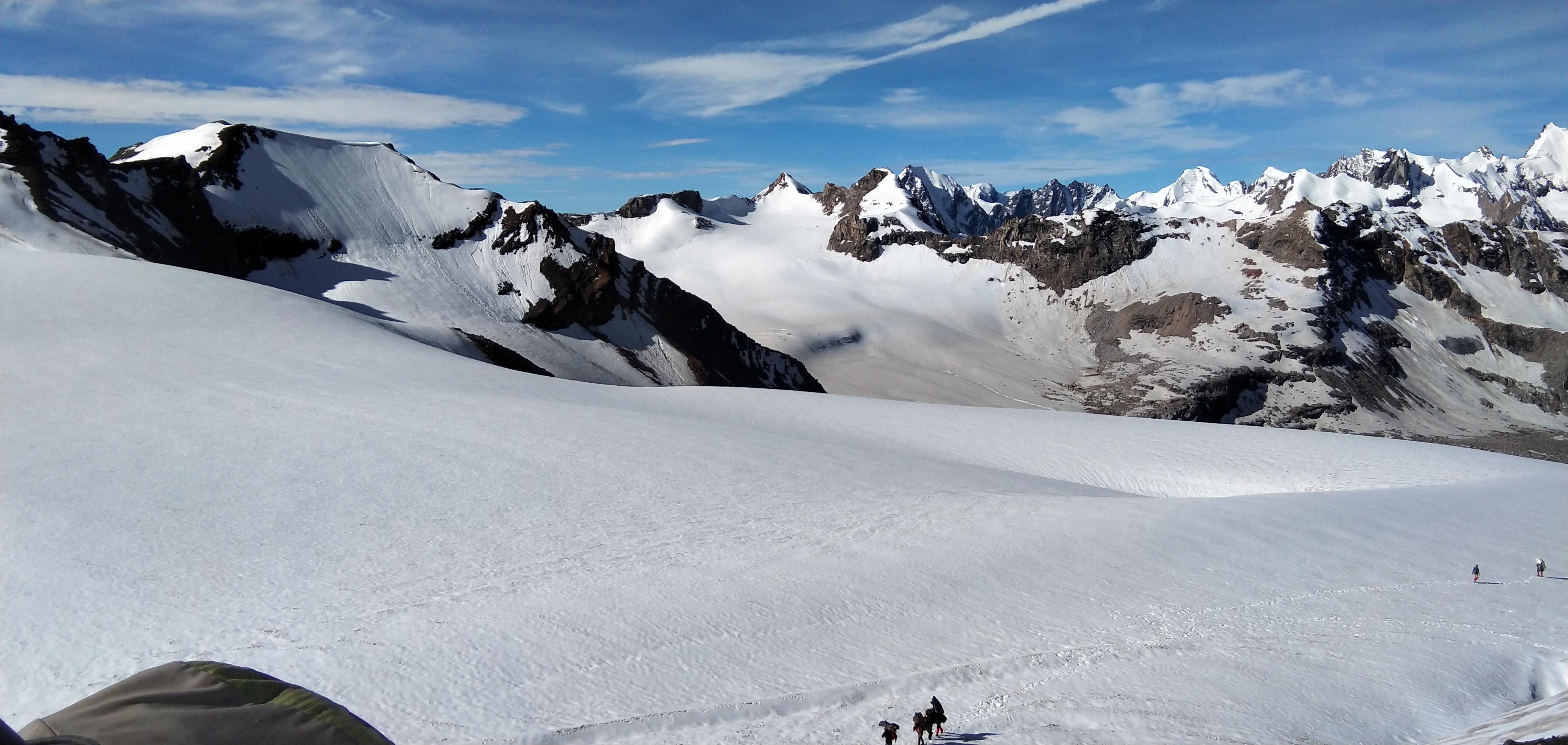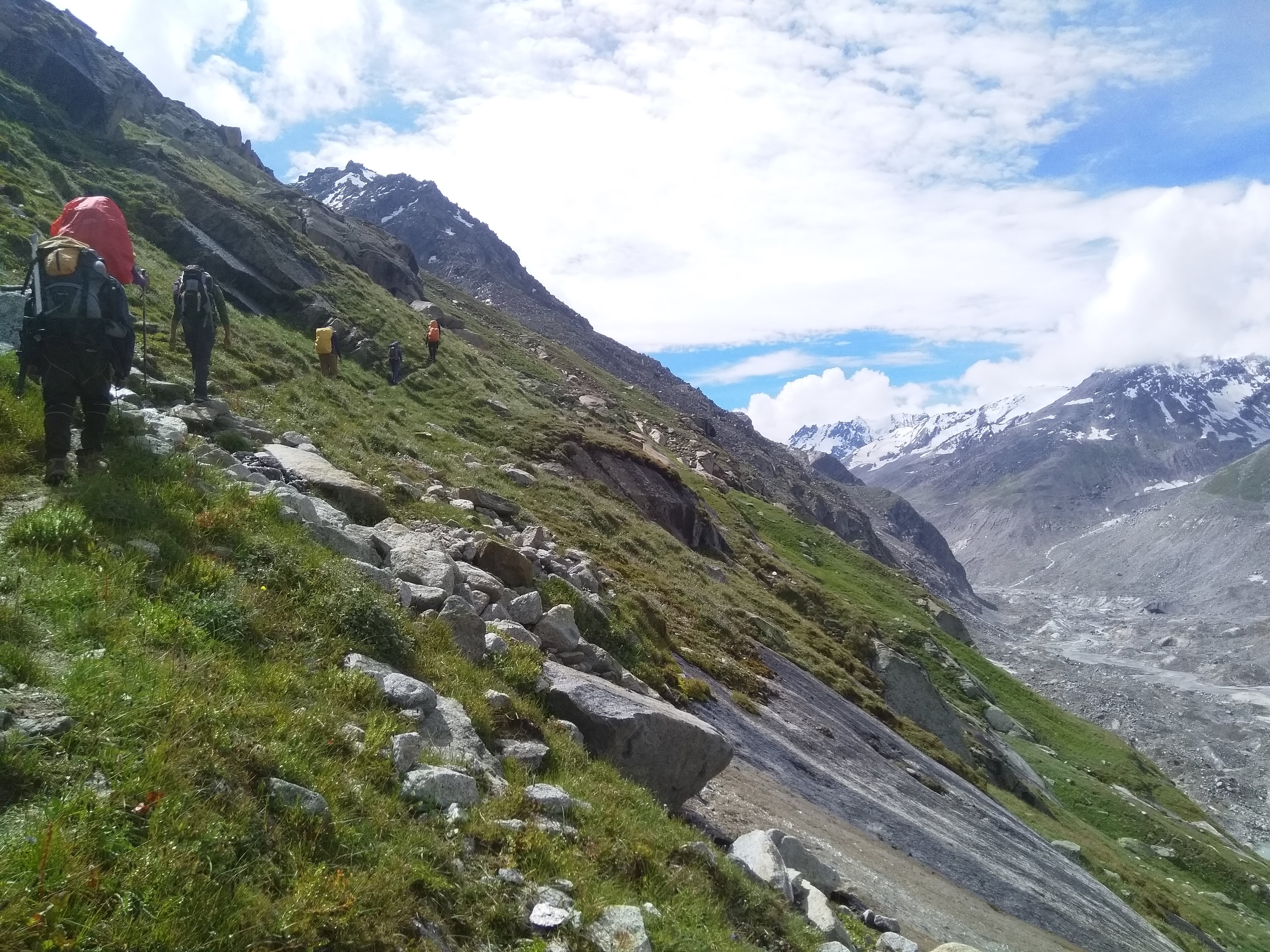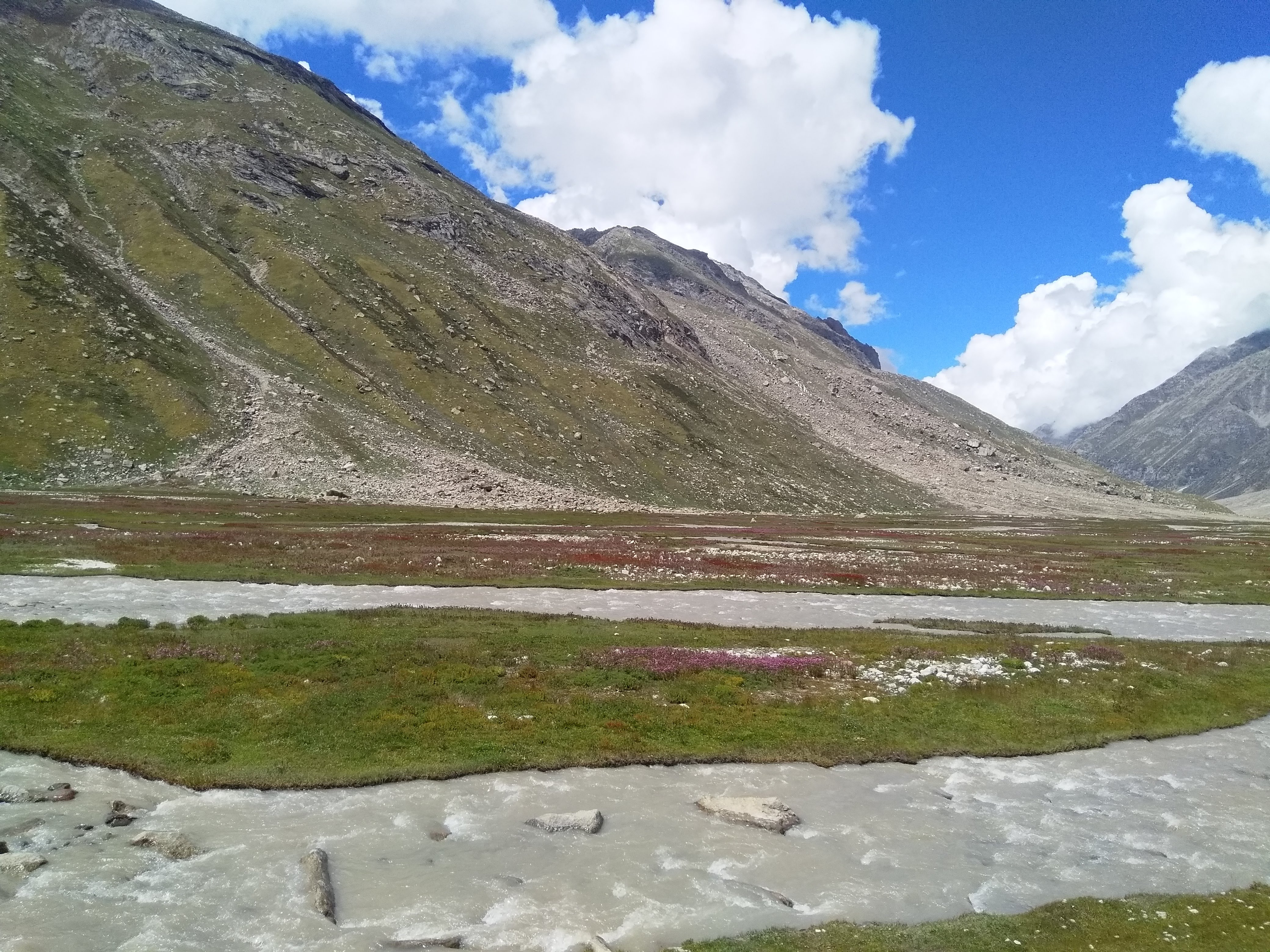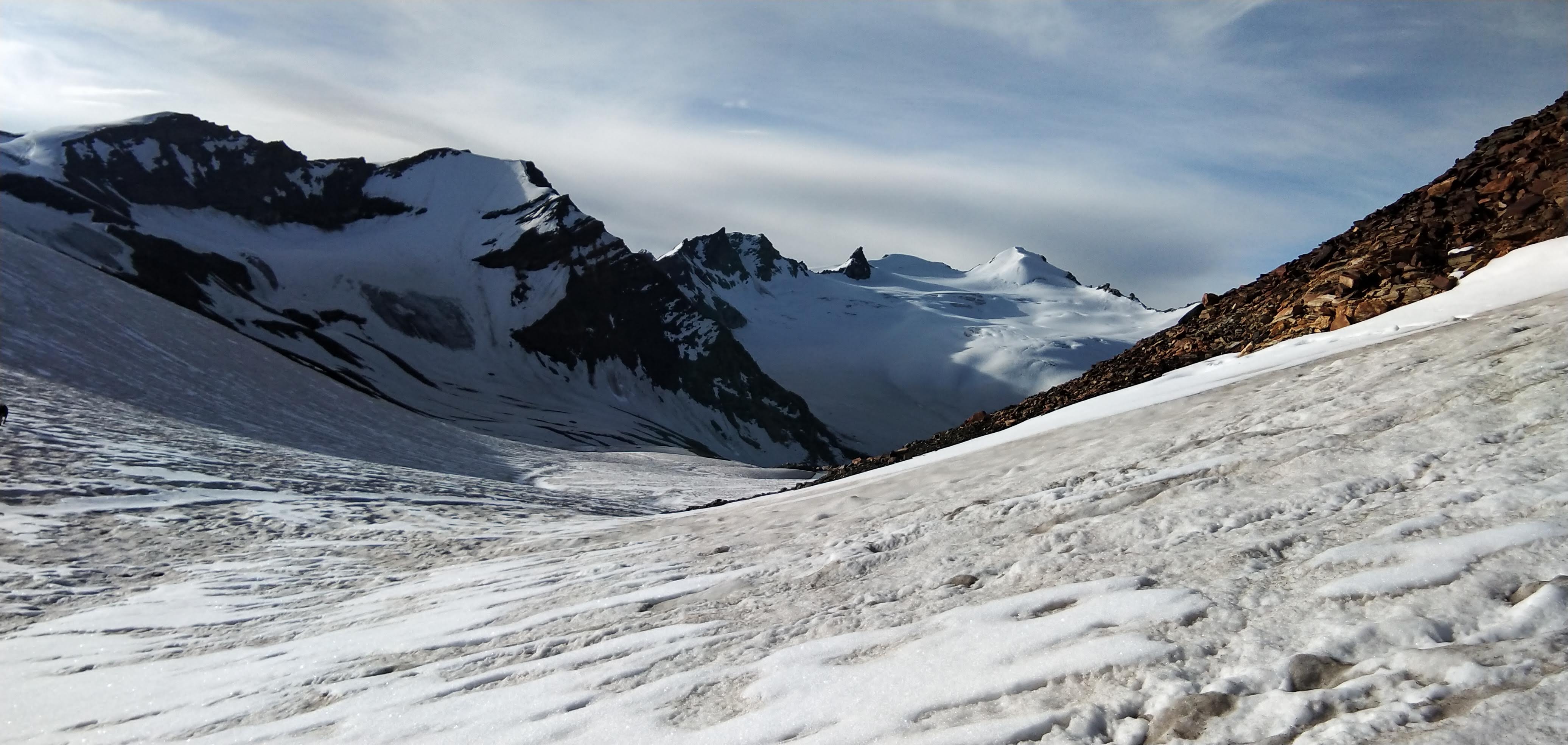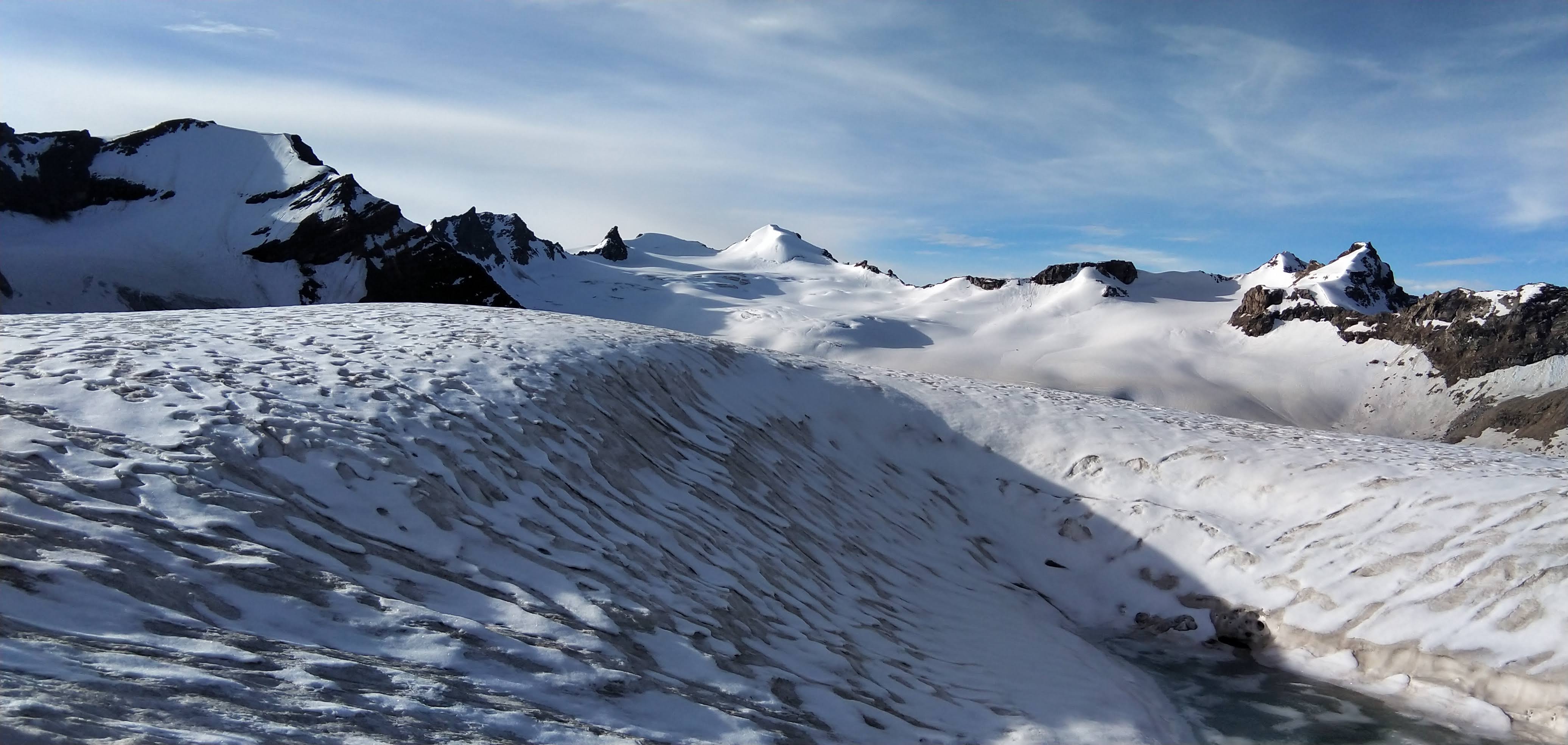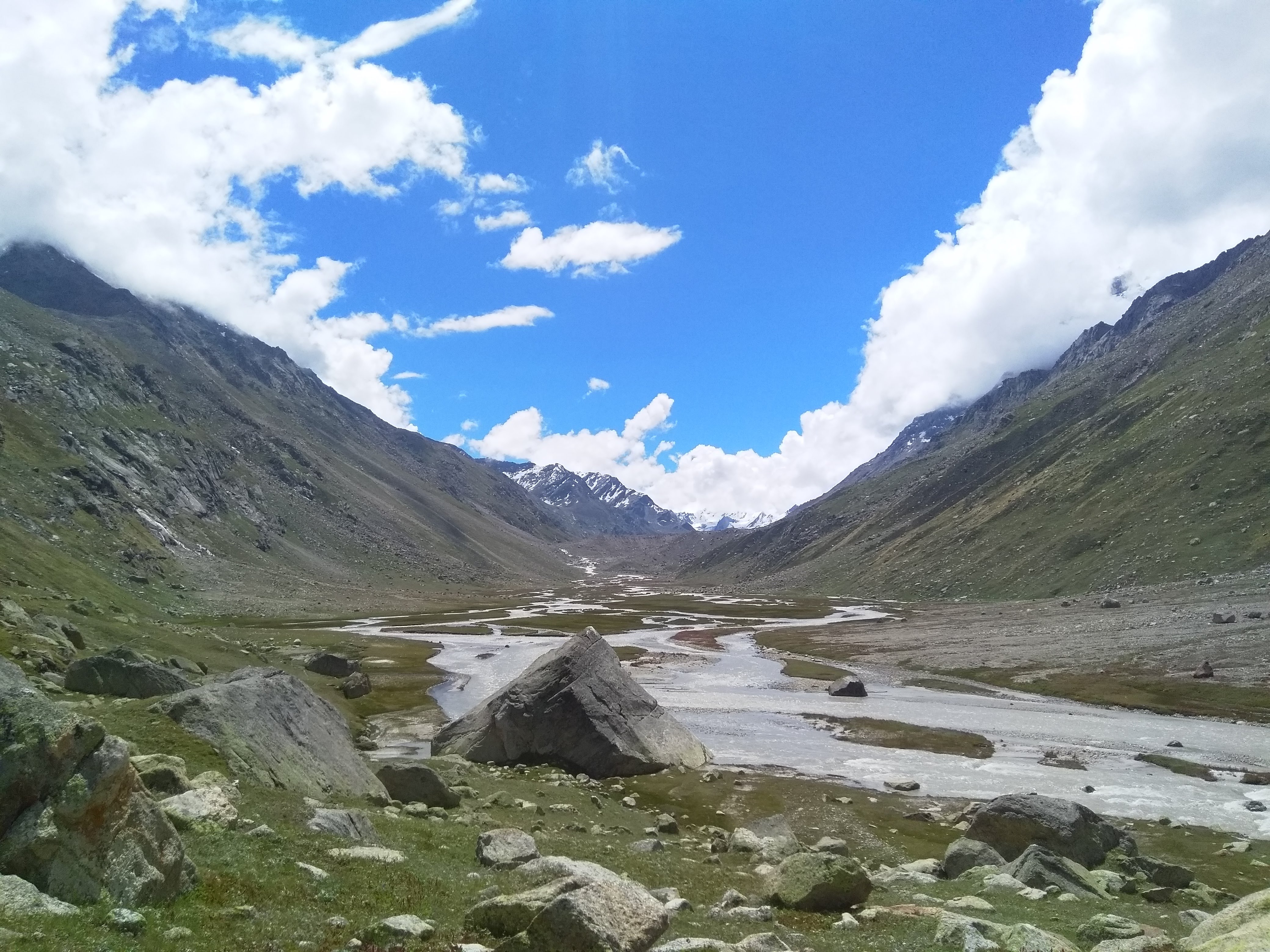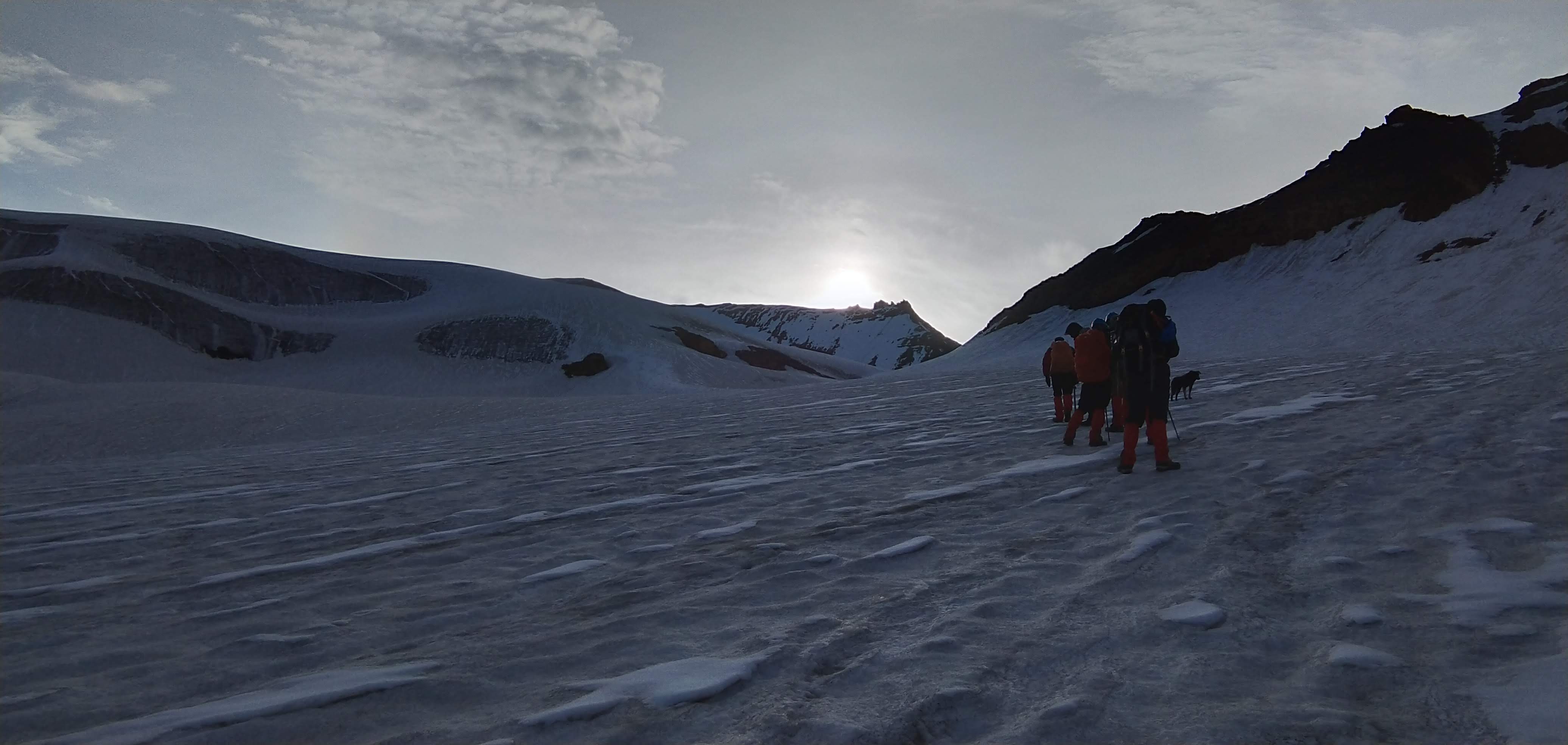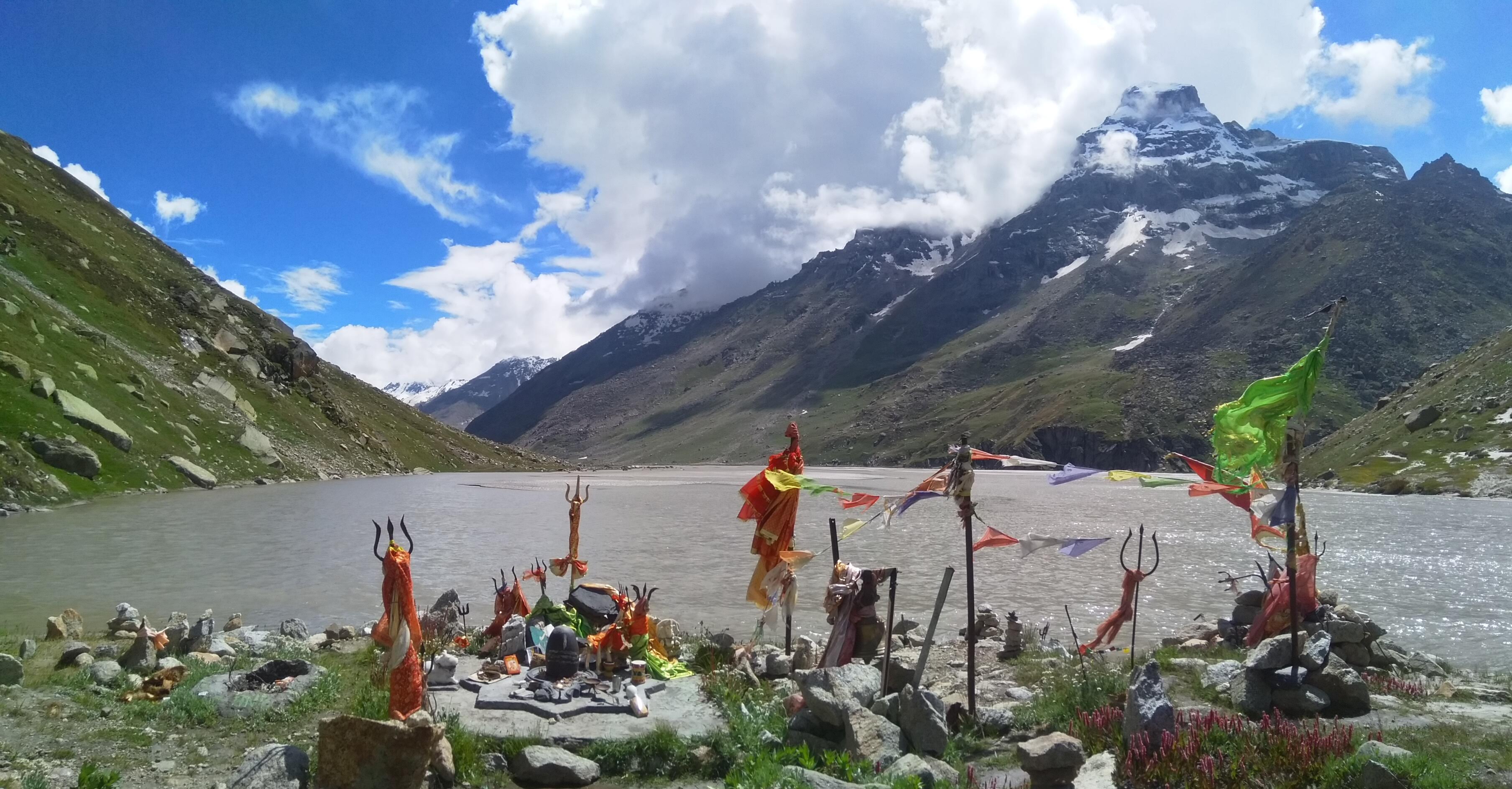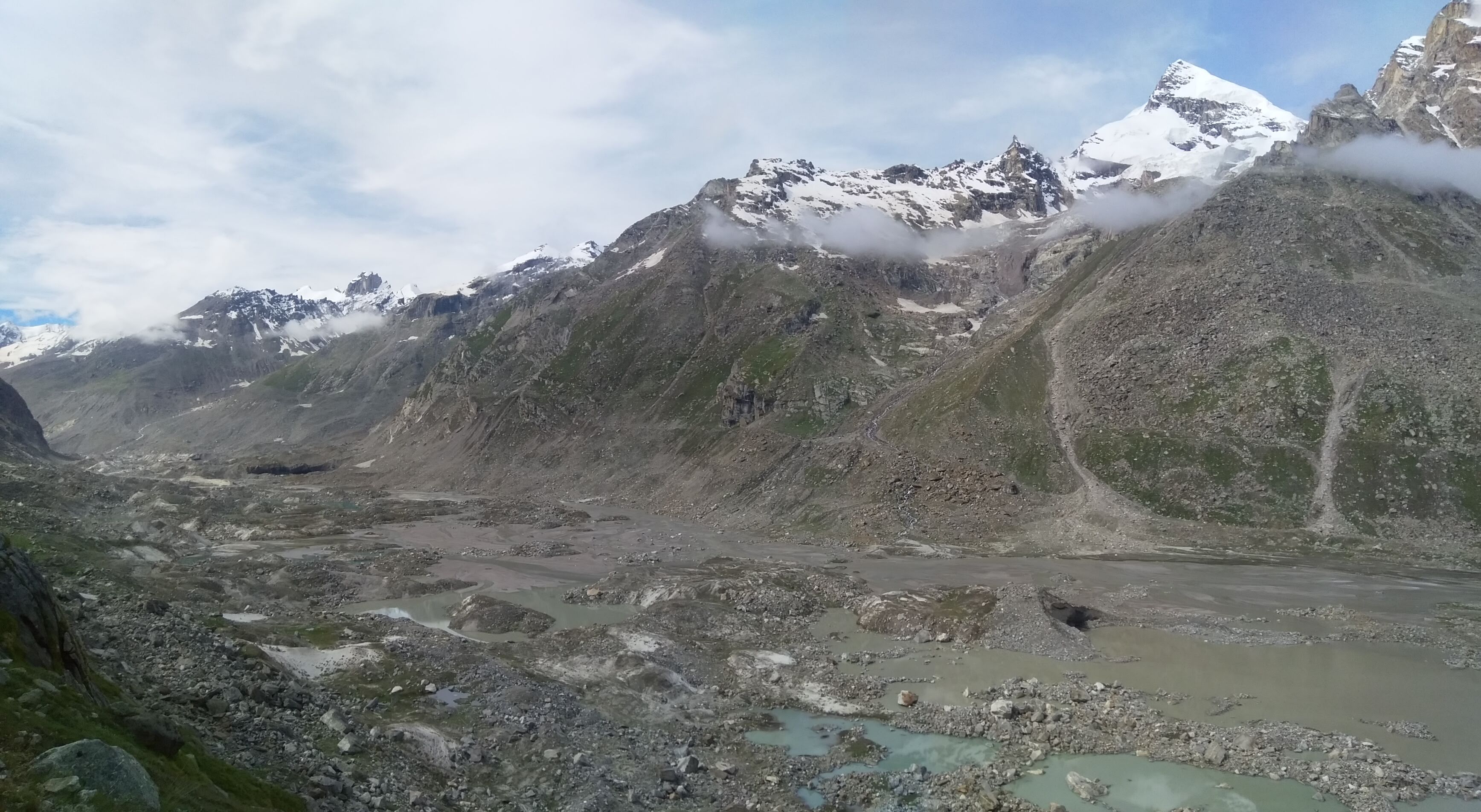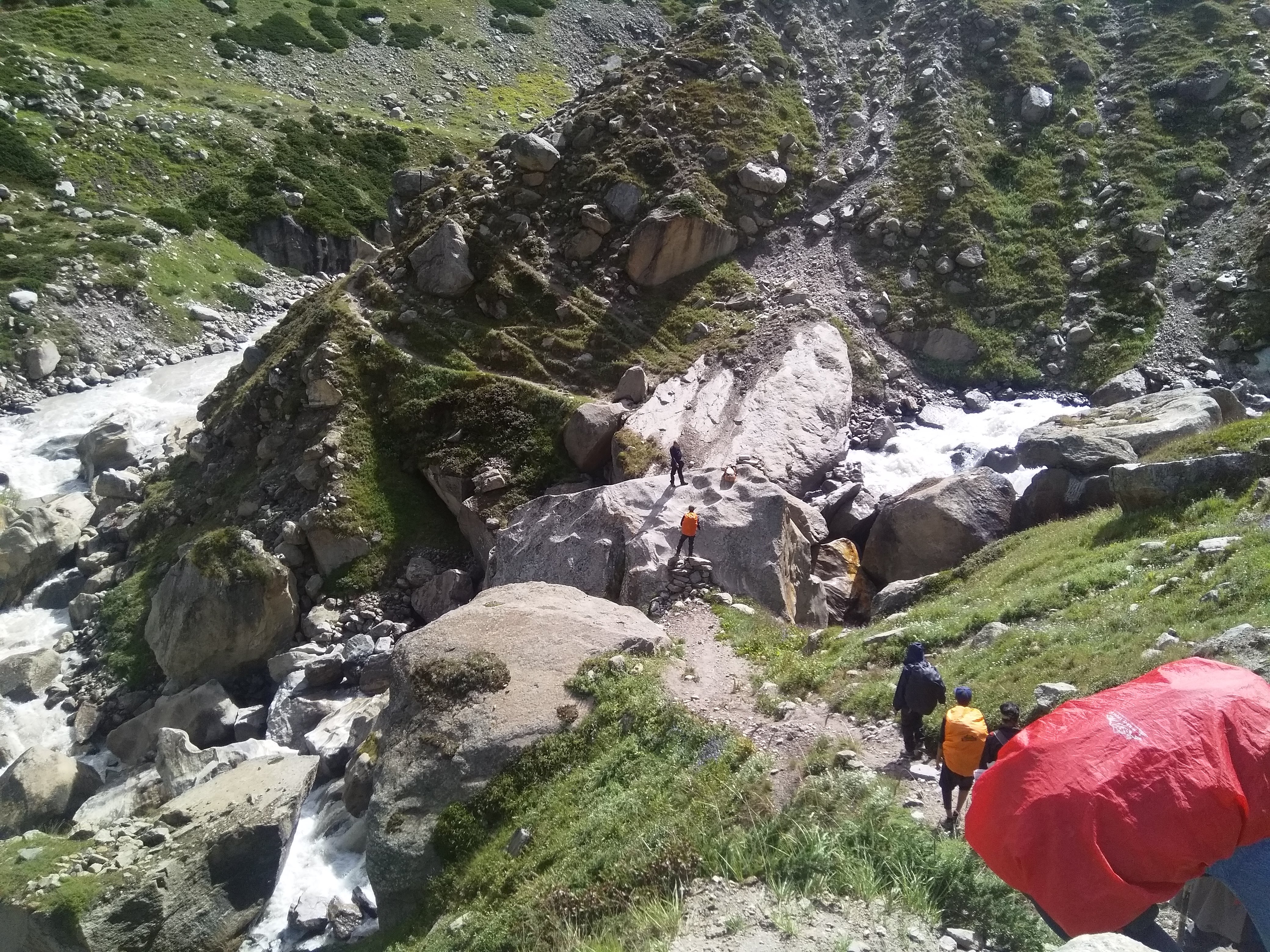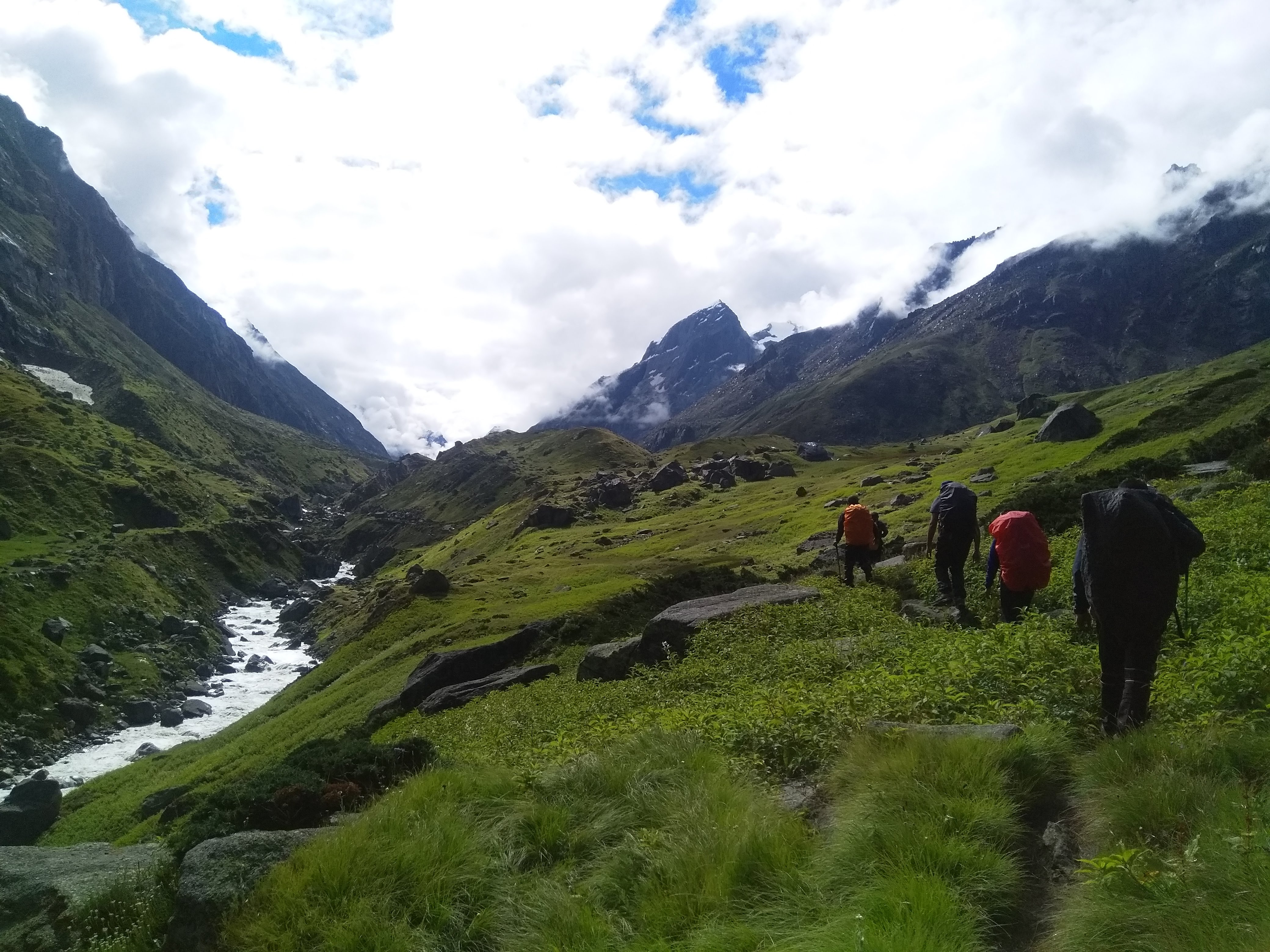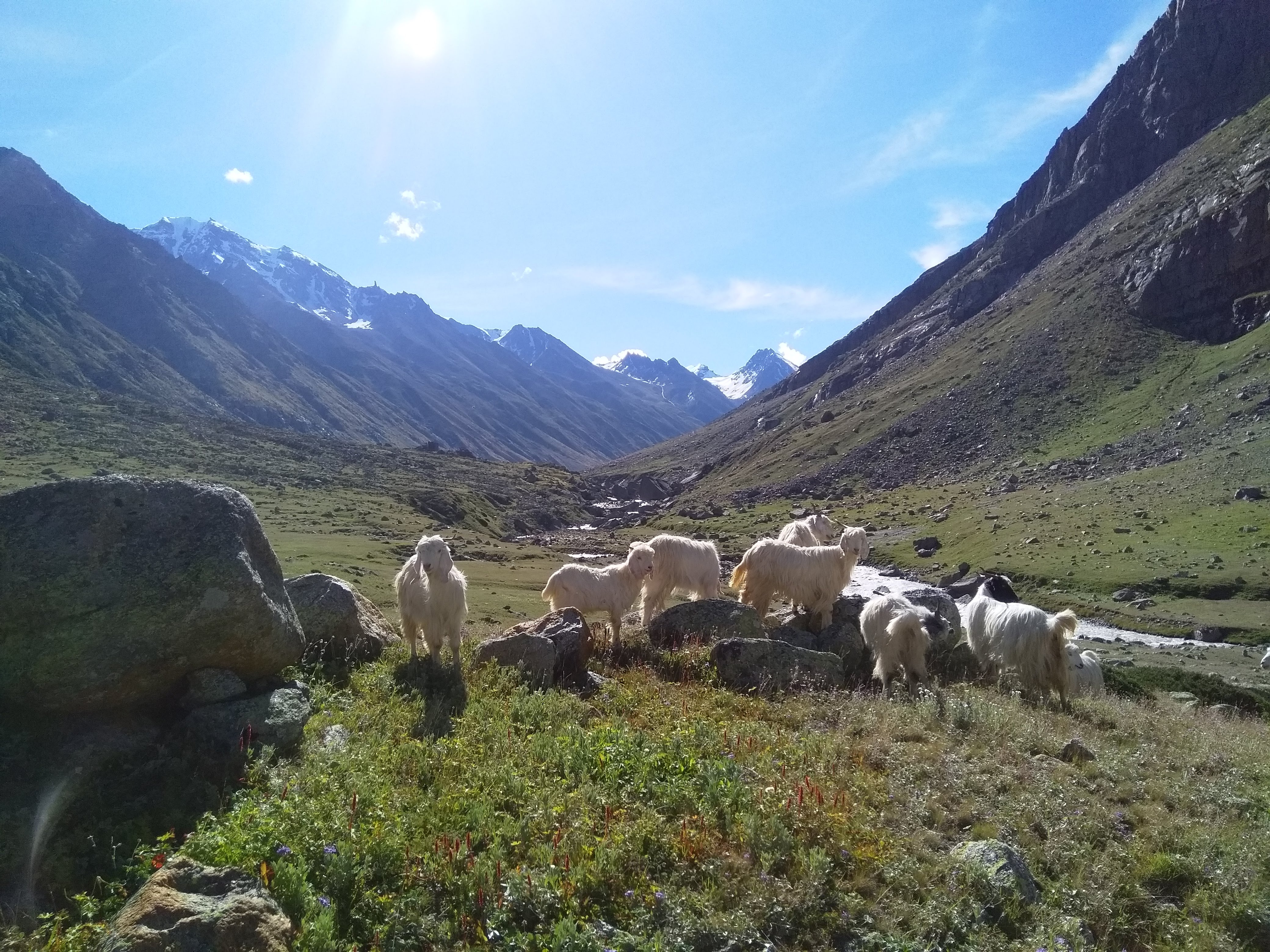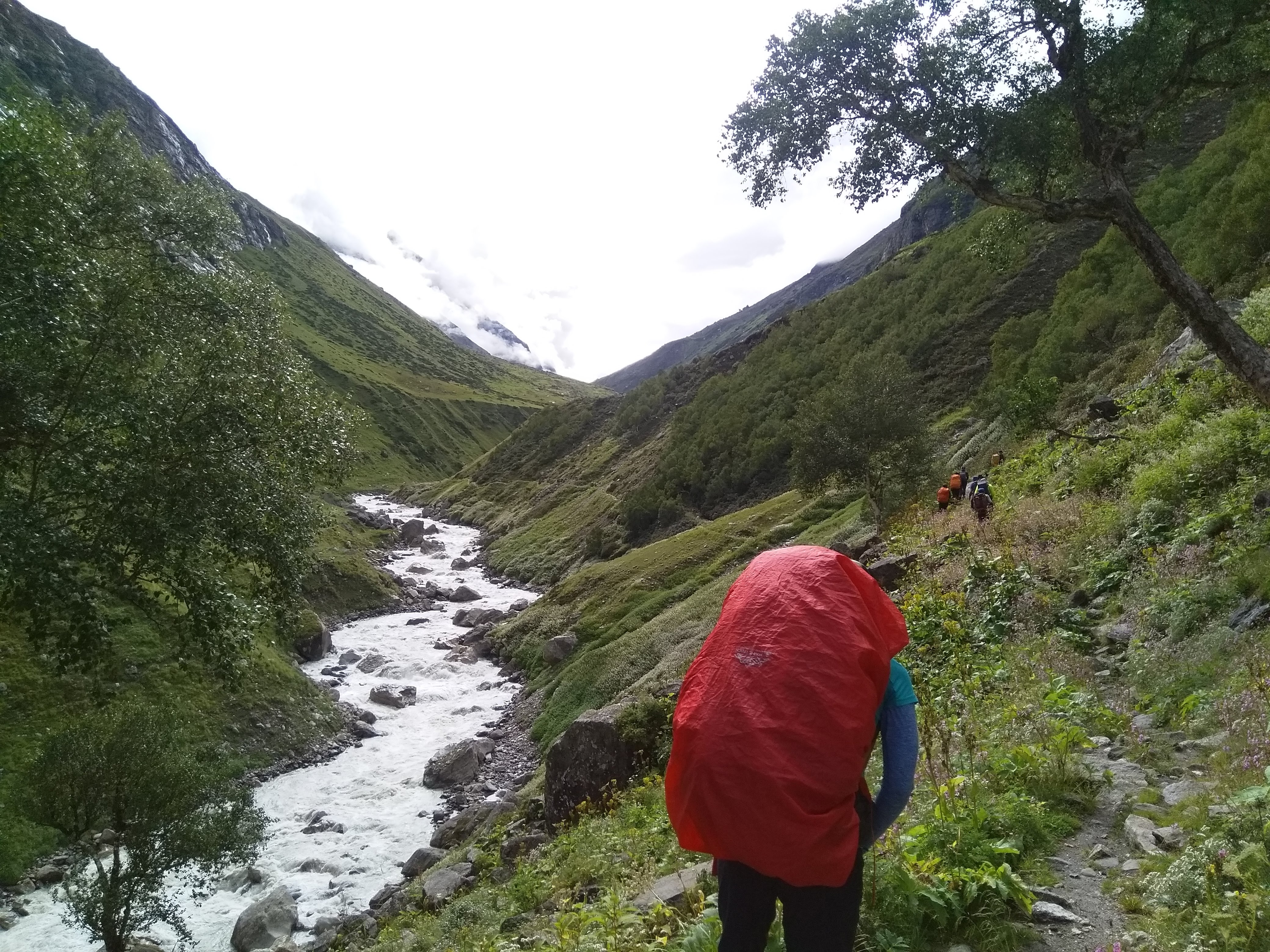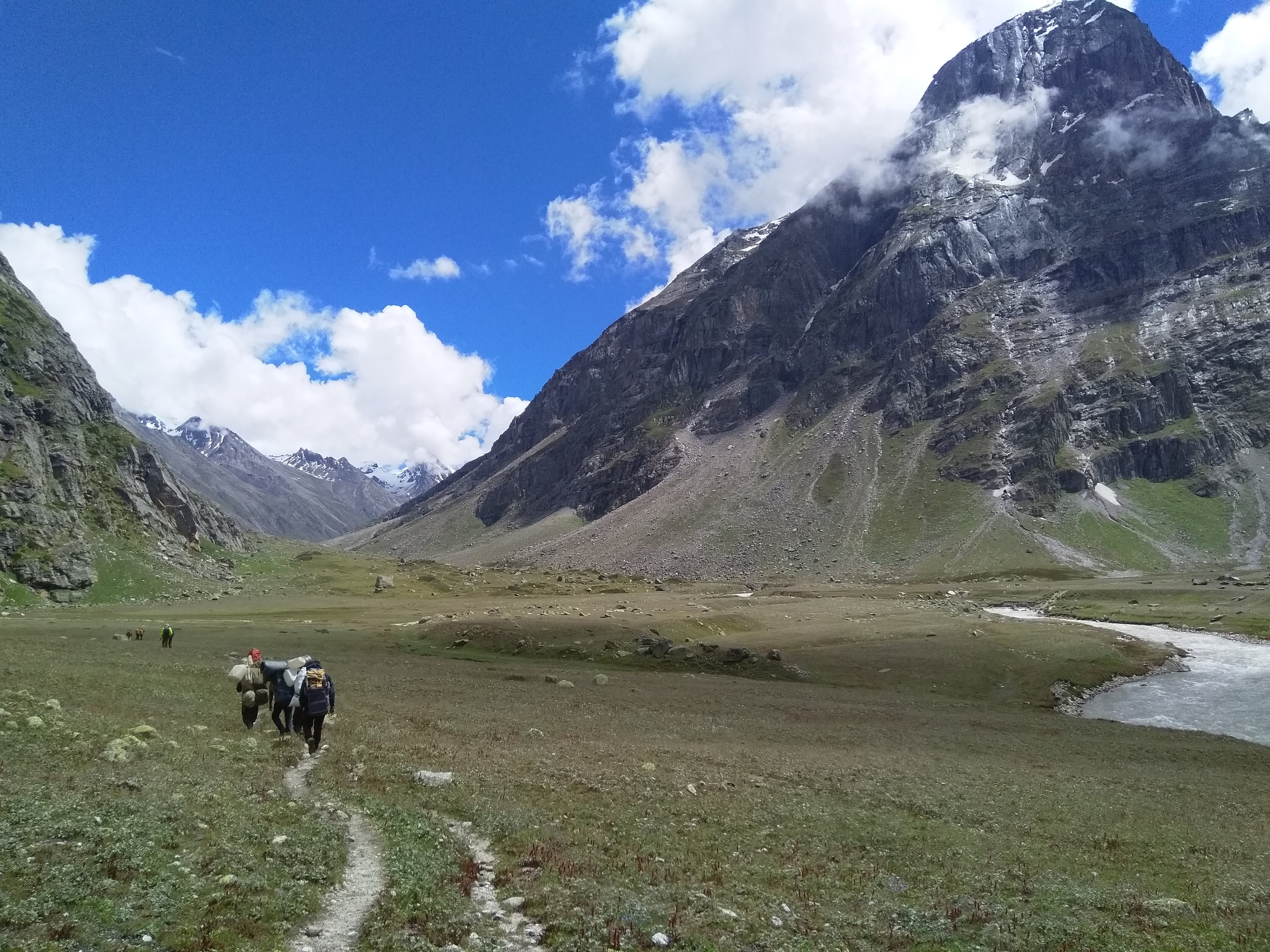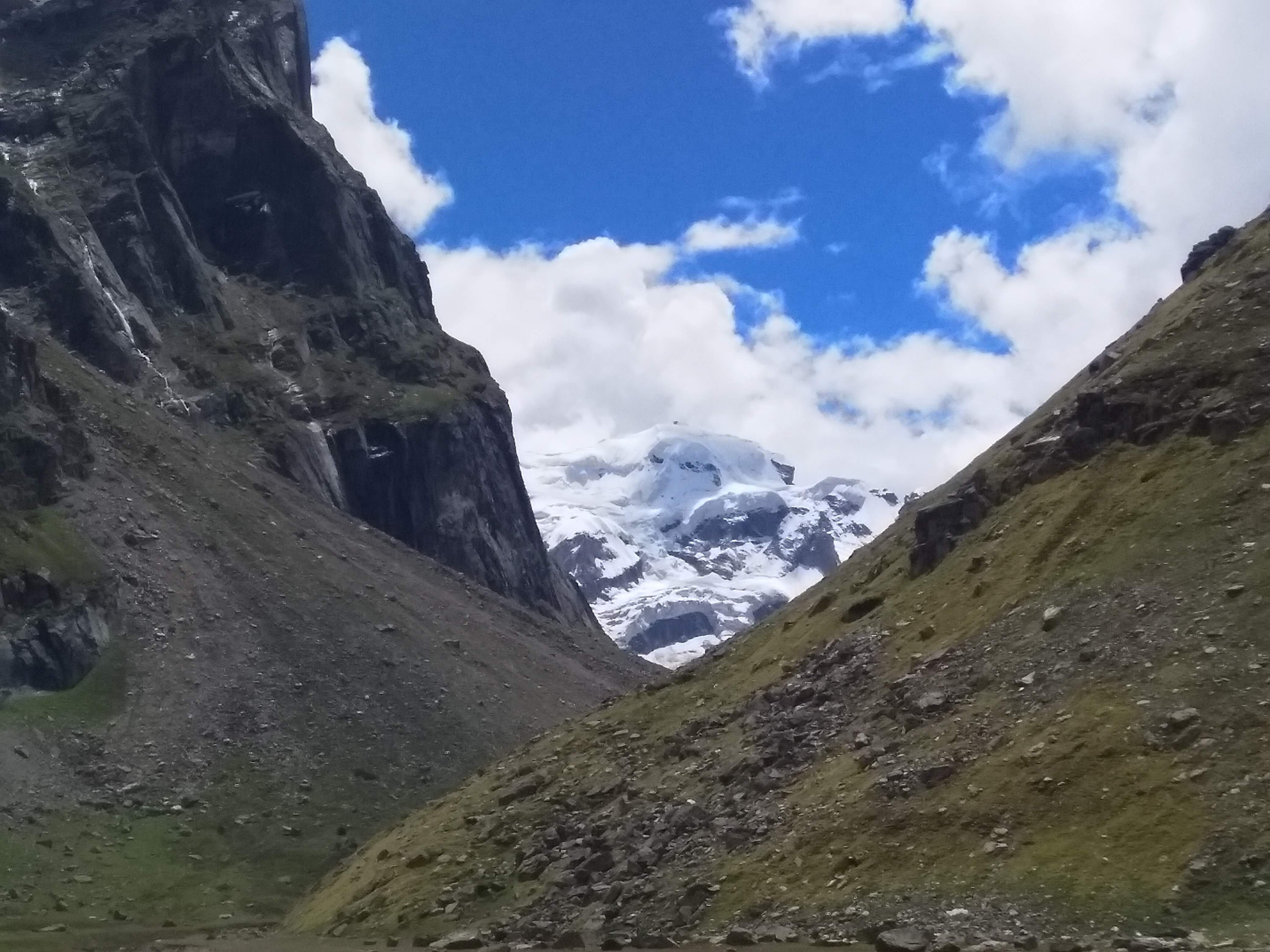📅 Day 1: Bhuntar (2,000M) to Barsheni (2,580M)
• Distance: 50 kms | Duration: 2.5 hours
• The trek begins with a relaxed start — assembling at Bhuntar and driving up to Barsheni, the trailhead for the Pin Parvati Pass trek. Bhuntar, just 11 km from Kullu, is well connected via its airport to major cities. The scenic drive of 50 km takes around 2.5 hours. From Barsheni, we trek a short stretch of less than 20 minutes to Kalga. The remainder of the day is spent going through the trek itinerary, meeting fellow trekkers, checking gear, and settling into your guesthouse or campsite. This day allows you to absorb the first glimpse of the Himalayan landscape and prepare for the adventure ahead.
📅 Day 2: Kalga (2,280M) to Kheerganga (2,960M)
• Distance: 8 kms | Duration: 6 hours
• Kalga is a quaint village in Parvati Valley, surrounded by apple orchards and colorful flora. The trail begins with a steep descent to the riverbed, followed by a moderate climb to Nakthan village — a tiny settlement of 20–30 households. Nakthan offers a brief respite and some refreshments, with views of the roaring Parvati River. From here, we continue through meadows and past Rudranag Temple, named after the nearby serpent-like waterfall. After crossing a wooden bridge over the Parvati River, the trail gradually ascends to Kheerganga. This campsite lies in the heart of a vast meadow, with natural hot springs perfect for a warm dip — likely the last for several days. The trail has multiple stream crossings, but plenty of rest points make it manageable.
📅 Day 3: Kheerganga (2,960M) to Tunda Bhuj (3,200M)
• Distance: 11.37 kms | Duration: 4-5 hours
• We begin early from Kheerganga, trekking through flower-strewn meadows. The trail alternates between muddy paths and flat terrain through dense forests. While the distance is moderate, the real challenge is resisting frequent halts to admire the landscape and capture photographs. The final stretch involves a steep climb through mucky terrain, followed by a short walk across meadows. As you spot the foamy waterfalls across the river, you'll know you've reached the Tunda Bhuj campsite, surrounded by cliffs and the gentle roar of the Parvati River.
📅 Day 4: Tunda Bhuj (3,200M) to Thakur Kuan (3,620M)
• Distance: 5.24 kms | Duration: 3-4 hours
• After breakfast, we leave Tunda Bhuj, following a trail dotted with meadows and cascading waterfalls. The day involves a 400M climb, making it a relatively easy trek. There is a tricky section about an hour into the trail, where landslides are possible, so caution is advised. As the tree line ends, the terrain becomes rocky. Thakur Kuan’s campsite is a vast pasture beside the Parvati River, with a nearby trolley bridge to explore if you arrive early.
📅 Day 5: Thakur Kuan (3,620M) to Odi Thatch (3,815M)
• Distance: 9.66 kms | Duration: 4-5 hours
• Today is thrilling, with two natural boulder bridges to cross — Pandu Pul 1 and Pandu Pul 2 — in the middle of the ferocious Parvati River. After the river-crossing adventure, the trail eases into a straight shepherd trail with multiple paths leading to Odi Thatch. This campsite, true to its name meaning 'meadows', is set in an expansive alpine pasture, offering a galactic-like panorama. Careful navigation is needed to follow the guide through the labyrinthine trail.
📅 Day 6: Odi Thatch (3,815M) to Mantalai Lake (4,096M)
• Distance: 10.31 kms | Duration: 5-6 hours
• The trail today is straightforward with gentle ascents until the final 300M climb to Mantalai Lake. Along the way, we reach Mini Mantalai, a junction where numerous streams converge. The lake is glacial, serene, and considered sacred, surrounded by the mighty Himalayas. The campsite is on the lake’s banks, offering a peaceful environment to relax and prepare for the higher altitude sections ahead.
📅 Day 7: Mantalai (4,096M) to Base Camp I (4,800M)
• Distance: 4.45 kms | Duration: 5-6 hours
• A demanding day with an 800M ascent. We start early before dawn while temperatures are lowest. The trail begins muddy with sections of loose scree. After crossing these, the ascent continues to a spur, then a moraine section which, though short, is challenging. Base Camp I sits on the edge of the Parvati glacier, offering spectacular views under moonlight or sunrise.
📅 Day 8: Base Camp I (4,800M) to Base Camp II via Pin Parvati Pass (5,289M)
• Distance: 6.37 kms | Duration: 7-8 hours
• Today is the summit push. An early start ensures firm ice for safer trekking. We traverse glaciers, negotiating open and hidden crevasses. The final 300–400M steep climb leads to the Pin Parvati Pass at 5,289M, with breathtaking views of Parvati Valley on one side and Pin Valley on the other. A long descent of about 1.5 km brings us to Base Camp II on the Pin Valley side, where we set up camp for the night.
📅 Day 9: Base Camp II (4,800M) to Wichkurung Thatch (3,500M)
• Distance: 11.83 kms | Duration: 6 hours
• The trail today is mostly descent. The first 3 km is steep, followed by river crossings and gentle flat stretches. After crossing streams and walking along the riverbank, we reach Wichkurung Thatch — a scenic, peaceful campsite in the Spiti region. The pace is easier, giving trekkers time to enjoy the high-altitude desert landscape.
📅 Day 10: Wichkurung Thatch (3,500M) to Mudh Village (3,970M) & Drive to Kaza (3,800M)
• Distance: 15.26 kms | Duration: 5 hours trekking + 2-hour drive
• The trail meanders through the wide-open Pin Valley, with multiple streams and unique high-altitude flora. We stop for lunch by a stream, absorbing the barren yet mesmerizing landscape. The trek ends at Mudh Village, the last settlement in Pin Valley, where you can explore local culture and cuisine. Afterwards, we drive for about 2 hours to Kaza, the administrative hub of Spiti Valley, for overnight stay in a guesthouse.
📅 Day 11: Kaza (3,800M) to Manali (2,050M) / Buffer Day
• Distance: ~200 km | Duration: 9–10 hours drive
• Kaza is the largest township of Spiti, with monasteries and small hamlets nearby to explore. We drive down to Manali via Kunzum La and Rohtang Pass. In case of delays due to weather or unforeseen circumstances, Day 12 acts as a buffer day. If used, an additional INR 5,000 per person is collected by the trek leader in Kaza. End of trek — a hot shower, hearty meal, and memories for a lifetime.
📅 Day 12: Buffer Day
Day 12 is reserved as a buffer to account for unexpected weather changes, trail conditions, or other unforeseeable circumstances. While most trekkers may not need it, it ensures the group has flexibility without compromising safety. If this day is utilized, an additional INR 5,000 per person will be collected by the trek leader in Kaza. It’s advisable to keep this day in mind while planning your travel back, so that your journey ends safely and comfortably.
